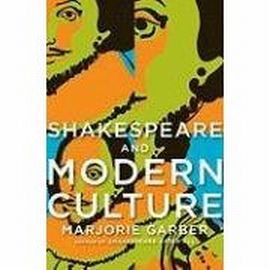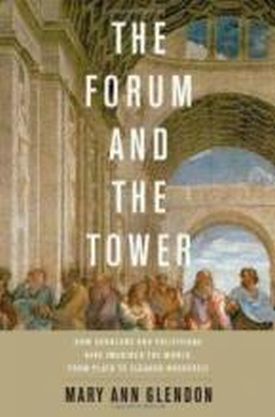Power Coupling
From The Weekly StandardMr. and Mrs. Disraeli: A Strange Romance
By Daisy Hay
Hardcover: 320 pages, Farrar, Straus and Giroux
On the first page of this enjoyable double biography, Daisy Hay quotes the Mister-half of her titular couple as having said, “Read no history: nothing but biography, for that is life without theory.”
Benjamin Disraeli (1804-1881) could hardly have foreseen a world like ours, in which there is no longer any such thing as life without theory. All of our lives nowadays are judged by, or filtered through, one sort of theory or another, among the most prominent of which is the feminist theory that the personal is political and that history itself should be seen through the prism of the gradual emancipation of women from traditional assumptions about their sex, which amounted (and in many cases still amount) to bondage and oppression.
Daisy Hay herself is naturally no prisoner of such beliefs, but she is in thrall to the liberationist version of 19th-century social history and, therefore, of the domestic history she has chosen to relate here, which is thick with its assumptions. Thus we learn of Mrs. Disraeli that “Mary Anne’s activities were constrained by a bourgeois middle-class morality that emerged in the early decades of the nineteenth century and bloomed during Queen Victoria’s reign.” Put like that, it must have seemed obvious to the author to add that “Mary Anne wanted more” — even though her documentation suggests the only thing Mary Anne wanted “more” of was attention from her (first) husband.
The outline of her story can be found in Robert Blake’s classic biography of Disraeli, now nearly a half-century old. Mary Anne Evans, born with the same name as her great contemporary, the novelist George Eliot, married a wealthy man with the same name as another great novelist of the next century, one Wyndham Lewis. The owner of an ironworks in South Wales, Lewis bought his way into Parliament and then, urged on by his wife, bought the second seat for the same constituency of Maidstone, in Kent, for his (and her) young protégé, Benjamin Disraeli. When Lewis died suddenly of a heart attack a few months later, Disraeli, already best known as a novelist, began an assiduous courtship of his widow.
Mary Anne was 45 at the time and 12 years older than he, but Dizzy (as she seems to have been the first to call him) had had a string of relations with older women whom he had invited to mother him, as he now did the childless Mary Anne. She was pleased to do so. In the aristocratic circles in which he was already moving, Disraeli was widely regarded as being rather vulgar, and Mary Anne also had a reputation as a “rattle” (chatterbox) with a fondness for extravagant dress. Disraeli, who was deeply in debt, acknowledged to his wife that he had been first attracted by her money; but all the evidence of the voluminous lifelong correspondence between the two, which has been preserved in the Bodleian Library at Oxford, supports his (and her) claim that the two soon grew to be deeply in love.
Daisy Hay fills in the details of the Disraelis’ domestic life that Robert Blake left out, mainly by generously quoting from their correspondence. Dizzy often wrote to Mary Anne several times a day when he was in Parliament and she in their home at Grosvenor Gate (modern day Park Lane) in London, or at the country estate they bought at Hughenden in Buckinghamshire. But Ms Hay has also dug deeply into the writings of the couple’s contemporary acquaintances, including those of Disraeli’s sister, Sarah, who was his preferred confidante through the early years of his marriage. Ms Hay’s labors are likely to persuade even those without much time for feminist theory that the retelling of the story of such a famous and historically important man from the point of view of the women whose company he so often preferred adds richly to our store of knowledge about him.
At least part of the reason for this is that Benjamin Disraeli was among the earliest democratic politicians to see that his private life could be turned to electoral advantage. To be sure, what carried this Jewish outsider — as he was still widely seen to be, in spite of his father’s having had him baptized at 13 — to the top of 19th-century British politics was his own considerable talent as speaker and parliamentarian. But it helped to be able to represent himself to the public as the uxorious husband he seems actually to have been in private life — not least with Queen Victoria, who, after hesitating at first to accept him as a cabinet minister, ended up in widowhood liking him better than Disraeli’s great rival, William Gladstone. Ms Hay recognizes that the love story of Mr. and Mrs. Disraeli was presented to the public with a political purpose in mind, but she makes rather too much of the fact.
Their story is history. . . But it is also fiction. . . . This book is about the way in which the Disraelis conjured their romance into being in a world thick with stories. In their youth they read versions of themselves in the epistolary novels of the late eighteenth century; in the 1820s and ’30s they saw their aspirations reflected in the silver-fork novels Disraeli and his literary contemporaries produced at great speed. They were middle aged when the Victorian novel came to maturity in the 1850s, the literary form that finds drama in the everyday. Theirs was thus the great age of fiction, when the novel made a romance of reality and turned ordinary men and women, living ordinary lives, into heroes and heroines.
As with the glibly invoked “bourgeois middle-class morality” of the 19th century, one feels that Daisy Hay is getting a bit far afield from the sorts of things the people she is writing about could have thought or said. There is certainly warrant for supposing that Dizzy and Mary Anne contrived to present a certain image of themselves and their marriage — a popular “narrative” as today’s theorists would put it. But the same has been true of nearly every politician for the past two centuries. It is a mere banality to make such a point of it, or to allow it to imply (as it doubtless will to some people) that the story is untrue or their love somehow inauthentic.
Although they do not seem overly intrusive, there are other annoyingly anachronistic bits of literary analysis imported from the 21st century. It would probably be expecting too much to be spared a reference to Coventry Patmore’s 1854 narrative poem The Angel in the House, but there is no reason to treat it (as Daisy Hay does) as if it were written for the sake of idealizing Mary Anne herself as the ideal Victorian wife. The poem, which was hardly known during her lifetime, is said to be symptomatic of how “In death Mary Anne was fictionalized. . . . Any sense that she had an emotional existence of her own or that the happiness attributed to her might be more complicated than appeared was subsumed into a vision of Victorian womanhood.”
Pretty clearly, that “vision” is more Ms Hay’s own than it was the Victorians’, who were also “more complicated” than she allows. “The Angel in the house probably never really existed,” Ms Hay adds helpfully, although the angel’s probable nonexistence is also said to have made Mary Anne into “a symbol of a woman she had never been, and a heroine for a dying age.” The dying age, of course, didn’t know that it was dying, and the praise heaped upon Mrs. Disraeli on her death in 1872 — after Disraeli had persuaded the queen to create her a peeress in her own right — was not offered in any spirit of historical contingency. She died a woman much admired, not only for what she was but also for what she wished to be known as: the romantic figure and loving wife that the book’s evidence shows us “really existed.”
More interesting to me — and, I suspect, to most readers — will be the narrative itself, as it was known to their contemporaries and accepted by them, largely without the need to speculate about the means and purposes of its invention and sustenance. In the words used to describe this not- quite-storybook marriage by Mary Anne’s obituarist in the London Times — words with which Daisy Hay herself chooses to end her joint biography — “We are glad to believe . . . that the romance of real life often begins at the point where it invariably ends in fiction.”
That is to say, with marriage. Touching as that tribute to the Disraelis is, it is also a moving reminder of those long-dead days when journalists wrote of what they were glad to believe and not just what they were regretful, indignant, proud, outraged, or horrified to believe.
Discover more from James Bowman
Subscribe to get the latest posts to your email.





